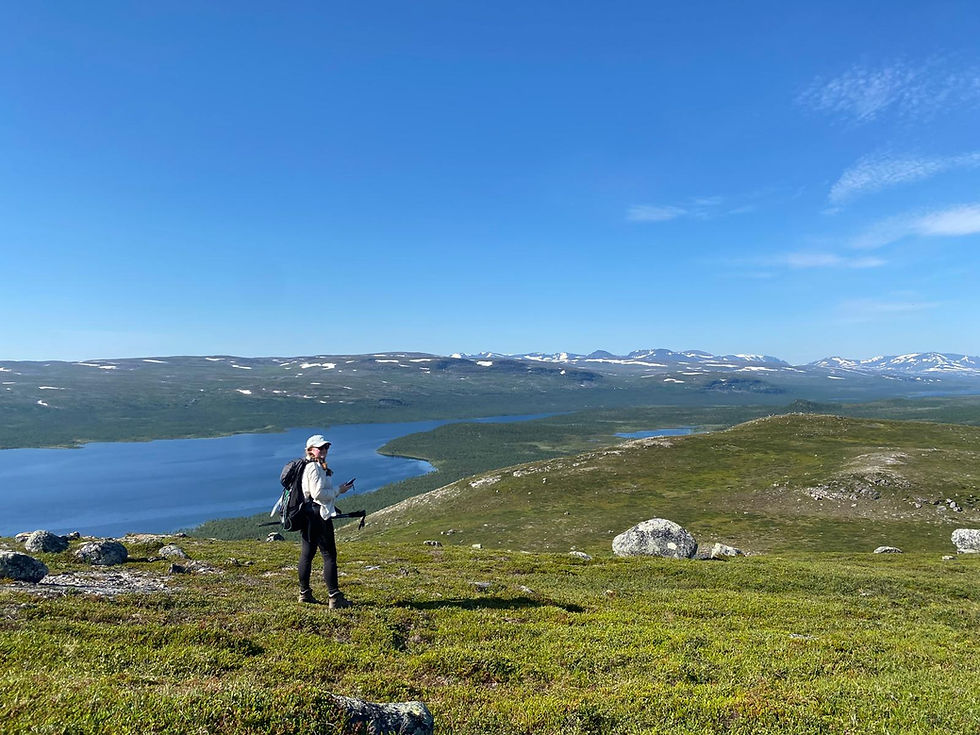DNA metabarcoding in Tromsø
- TEBlab

- Feb 21
- 2 min read
Last year, I had the pleasure to attend an eDNA metabarcoding course in the Arctic University Museum of Norway, Tromsø.

Environmental DNA (eDNA) is that which is obtained from environmental samples such as water, scat, soil, sediments, etc. Basically DNA that is not extracted directly from tissue. Although sometimes the objective may be to detect a particular species in the sample, usually the idea is to explore species occurrences across taxa. In order to accomplish this, the most common approach to sequencing eDNA is metabarcoding. Metabarcoding consists of amplifying particular regions of the genomes of organisms. These regions ideally need to be variable between species, but conserved across species. This allows the design of genetic markers (primers) that can bind specifically to the conserved region and allow the amplification (via Polymerase Chain Reaction or PCR) of the variable region. Multiple samples can be pooled together thanks to the addition of unique tags to the primers, but we won't get into that now.

Suffice to say, that metabarcoding allows us to analyse the biotic composition of several taxa across several samples at once. However, this comes with caveats. Firstly, the region you target determines the taxonomic group/s or resolution you can achieve from your samples. Secondly, the region of interest will only identify species whose sequence is already in the DNA reference database. Thirdly, DNA of a given organism is less concentrated and more degraded than that obtained directly from fresh, frozen, or dried tissue. Somewhat related to this, special care must be taken to avoid contamination as it can be difficult to separate it from real signals, and higher concentrations of contaminant DNA compared to the environmental DNA might obscure real signals further.

Back to Tromsø. The course was led by experts in the field such as Pierre Taberlet, Eric Coissac, Frédéric Boyer, Inger G. Alsos, and Youri Lammers. It covered everything from potential applications and limitations, briefly through sampling and laboratory procedures, concentrating on bioinformatics and analysis of the data. All that in scenic northern Norway.
During my PhD at Manchester Metropolitan University, I employed eDNA metabarcoding to study the prokaryote and invertebrate communities associated to bromeliads. Now, as part of the TIME-LINES project led by Sandra Nogué, we are metabarcoding sedimentary ancient DNA (sedaDNA) to elucidate the composition of past island ecosystems. Stay tuned!

Author
Xaali O'Reilly Berkeley, Postdoc



